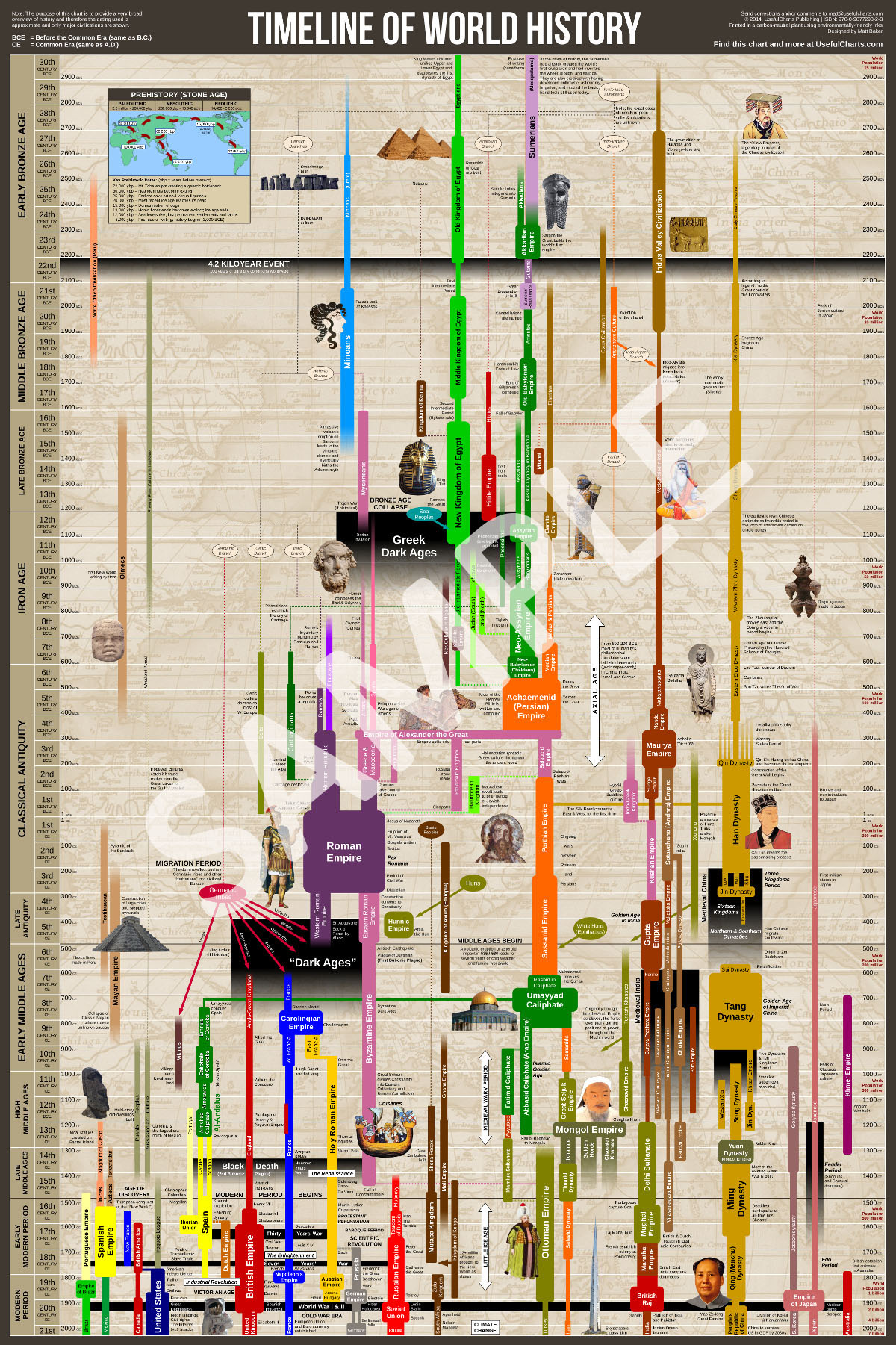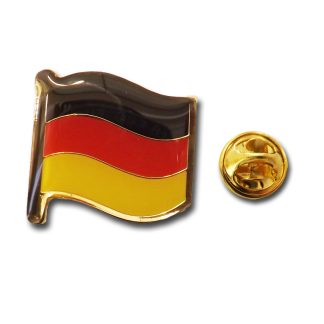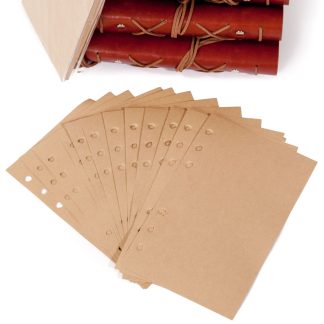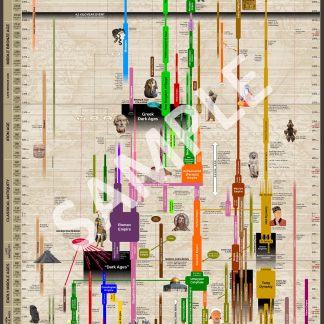Description
Over 100 major empires, kingdoms and civilizations are displayed in a colorful synchronistic (side-by-side) format so that one can quickly see how different events in different places relate to each other and get a broad sense of the general “flow” of history.More than 500 facts are displayed, including:Famous peopleImportant achievementsMajor warsSpecific eras of human developmentNatural disasters and more!On the main chart, the names of each century (e.g. third century CE) are included alongside the dates (e.g. 200-300 CE) in order to avoid any confusion and, unlike many other timelines, the units of time remain equidistant in order to provide a proper comparison between ancient empires and modern ones.A conscious effort has also been made to make the chart less Eurocentric than other popular (but now terribly outdated) timelines and thus what was happening in India, China, Africa, and the Americas is shown alongside what was happening in the Middle East and Europe.This poster was fully revised and updated in 2014 and as such represents 21supst/sup-century scholars’ current knowledge of the past – for example, potential linkages between Indo-European groups are shown as well as several newly discovered cultures such as the Oxus Civilization.spanCopyright 2014. 24 x 36 inches. Printed on glossy paper. Middle/high school. /spanspanISBN: 978-0987729323/span




